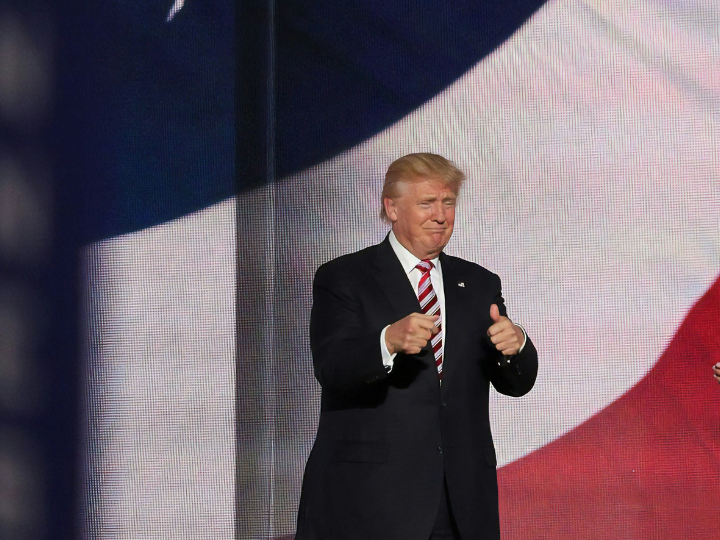by Ivana Naumovska*
When a firm is accused of misconduct, it doesn’t suffer the consequences alone. Not only are stakeholders from suppliers to employees left reeling; shockwaves reverberate outwards to their competitors in the same industry, haemorrhaging market value.
This so-called stigma effect is seen in scandal after scandal, from the 2002 accounting fraud that engulfed WorldCom, then the second-largest long-distance telecommunications company in the United States, to a similar scandal that felled German fintech giant Wirecard last year. Rivals of accused firms often sustain financial and reputational damage as consumers assume they have engaged in similar wrongdoing.
It stands to reason that, beyond the immediate repercussions, the downfall of a firm can benefit certain close rivals, not least from defecting customers. But little is known about which firms tend to be the winners and which the losers. In a new paper, Dovev Lavie and I show that the extent of product market overlap with an accused peer determines whether a firm gains or loses in the wake of a misconduct revelation. This metric can only be assessed with a sufficiently granular industry classification system.
Firms with a high degree of market overlap with the accused peer can gain by strategically positioning themselves as a substitute for the latter, in what’s termed the competition effect. All other firms will unfortunately suffer from the fallout, but they can try to avert the worst by emphasising their differences from the troubled firm.
For investors, being attuned to the degree of similarity among players in the same industry can point them toward the likely winners of corporate misconduct, whom less discerning investors tend to shun in the aftermath of a scandal.
Overcoming stigma
By far the most accessible and commonly used attribute for categorising firms in an industry and assessing their similarity is the product. The Standard Industry Classification, the system widely used in the United States until recently, is based on product lines. Yet research on the spillover effects of corporate misconduct has not considered how varying degrees of product overlap among firms in an industry might lead to different outcomes for the firms when one of their peers is accused of wrongdoing.
Seeking to fill this gap, we theorised that in addition to the much-studied negative spillover of the stigma effect, firms can also benefit from a peer’s scandal if their products are highly similar. A study of financial misconduct in the US pre-packaged software industry confirmed our theory.
We collected data on 242 publicly traded firms operating in the industry between 1991 and 2001. There was a total of 16 enforcement actions by the Securities and Exchange Commission (SEC) for financial misrepresentation, resulting in fines for all the accused firms.
To measure market overlap among the firms, we dissected their complete product portfolios using a classification system developed with the help of industry experts. Firms were compared on three nested levels of granularity: four product classes (coarse), 54 product segments (intermediate) and 464 product functions (fine-grained). The degree of overlap ranged between 0 (no overlap) and 1 (complete overlap); the more granular the classification, the less overlap among firms.
We measured the market’s reaction to firms’ misconduct by calculating the three-day cumulative abnormal return (CAR) – the difference between actual stock market return and the expected return – starting the day prior to the announcement of the SEC enforcement action.
One firm’s loss is five others’ gain
Our analyses show that on average, stock market valuation fell by US$447 million (–30.844 percent CAR) for accused firms and US$78 million (–1.981 percent CAR) for their peers. The negative repercussion for non-accused firms suggests that, overall, the stigma effect is stronger than the competition effect.
No surprises there. What’s more fascinating was a U-shaped relationship between the product market overlap of an errant firm and its peers, and the latter’s CAR. What this means is a firm’s market valuation tends to fall after the misconduct comes to light, up to a certain level of market similarity with a wrongdoer. For our sample, a one-standard-deviation increase in market overlap to 0.592 from the mean of 0.259 led to a 0.498 percentage point dip in the non-accused firm’s CAR. In dollar terms, this was nearly US$19 million of market value wiped out.
But as similarity rises above that level and beyond, competition gains grow while the stigma effect weakens, reducing the overall collateral damage to non-accused firms. In fact, a net gain occurred in our study when market overlap exceeded 0.905 at the fine-grained level of measurement. This translates to 5.666 rivals out of an average of some 76 per firm. Put another way, for every firm accused of wrongdoing in the US packaged software industry, five or six close competitors benefited from a higher market valuation.
When market overlap with the accused firm reached 0.926, a non-accused firm saw a 0.802 percentage point increase in CAR, or a US$30 million boost to its market valuation. The Wirecard scandal provides a recent illustration of such a competition effect. Following revelations last year that billions were missing from the books of the payment services firm, shares in its American rivals Green Dot and Paysign immediately surged.
Sophistication pays
So far our findings suggest that investors collectively are able to discern which firms are sufficiently similar to disgraced ones to enjoy the spoils, and react accordingly. But why penalise less similar firms that haven’t done anything wrong? We hypothesised that this is largely due to retail investors and less sophisticated institutional investors falling into the guilt-by-association bias, resulting in the stigma effect.
More savvy investors, by contrast, have the expertise and resources to analyse firms and industries with a fine lens. They can therefore better anticipate the competition effect and increase their shareholdings in a select group of the accused firm’s closest rivals.
To test our theory, we examined changes in shareholdings in non-accused firms in the quarter before and after an accusation event by sophisticated (hedge funds and mutual funds) and less sophisticated (e.g. banks and insurance firms) institutional investors. We excluded retail investors since few of them have the know-how or wherewithal to analyse firms in as much detail as institutional investors.
In line with our hypothesis, we found that on average, more sophisticated investors increased their stakes in non-accused firms by US$11.678 million for a one-standard-deviation increase in fine-grained market overlap. Less sophisticated institutional investors did not.
Keep your enemies closer
Our study shows that managers ought to anticipate and respond to competitors’ unethical behaviour just as they do run-of-the-mill competitive actions such as price cuts and quality improvements. Somewhat counterintuitively, close competitors of an accused firms should underscore the similarity of their products to exploit the positive spillover of the competition effect. Other players should emphasise the dissimilarity of their products in order to counteract the stigma effect.
Beneath it all lies investors’ level of discernment. Sophisticated players like hedge funds are more likely to use a fine-grained market classification to assess the competitive landscape, and focus on the winners of corporate misconduct, giving rise to the competition effect.
But as less discerning retail investors pour into the market thanks to the rise of trading apps such as Robinhood, the stigma effect can only become worse. Don’t bet against it.
*Assistant Professor at INSEAD. She studies financial markets, with a focus on corporate fraud and the diffusion of controversial practices
**first published in: knowledge.insead.edu




 By: N. Peter Kramer
By: N. Peter Kramer
